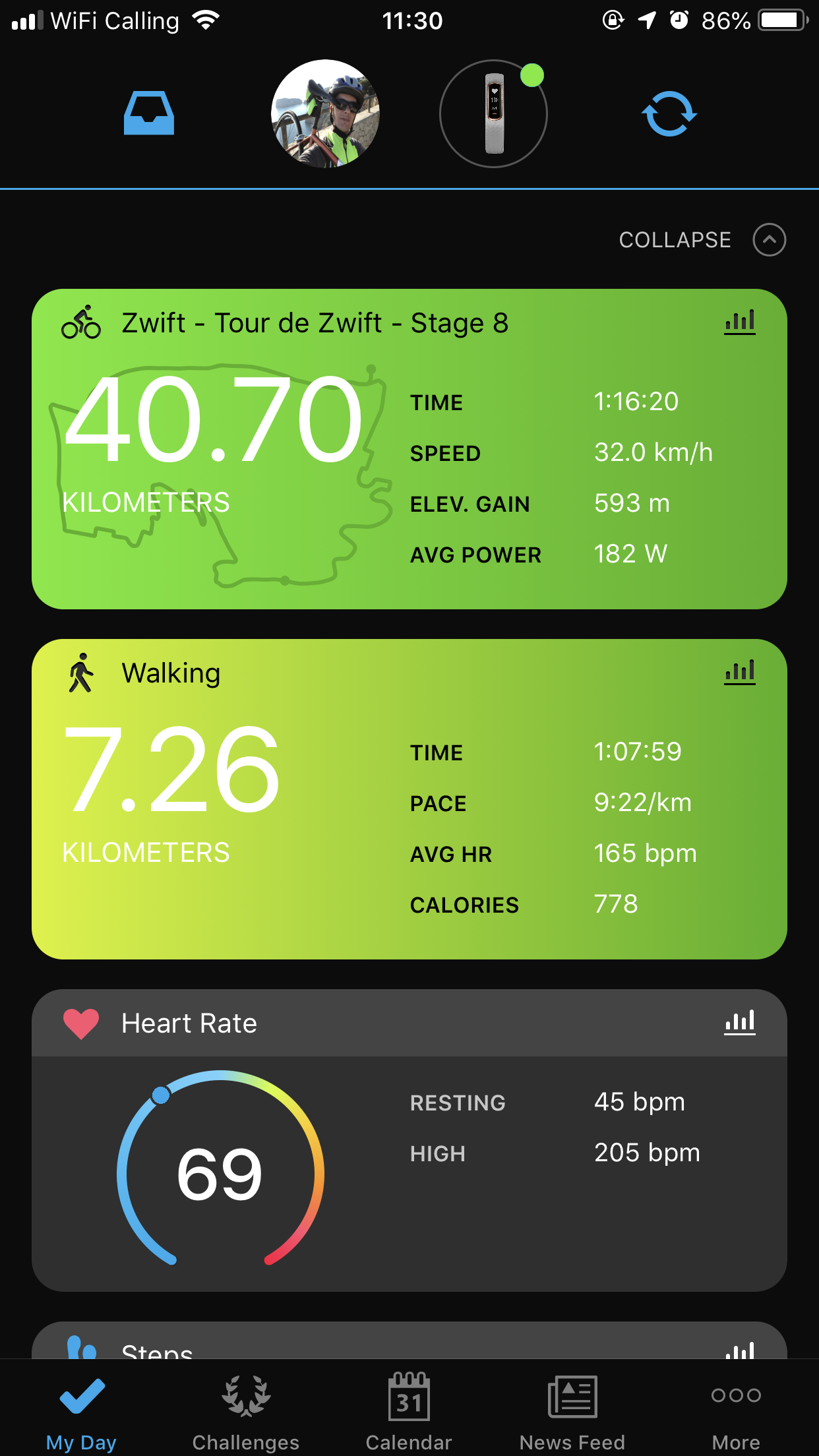Activity trackers are designed for walking, running, canoeing and activities where you move your arms. Cycling is not one of those sports. Unless you’re cycling on a specialist bike that has handles you’ll be using your legs and your upper body will move very little. I have a workaround.

My workaround is to put the activity tracker in a pocket. In so doing it counts how many times a leg “steps” and your goal for the day is not missed. This is especially true when your goal is to take several thousand steps. Some would call it cheating but I call it thinking laterally.
Yesterday when I did this it thought that I had been running so I corrected it to indoor cycling. Today despite 80-100 strokes per minute it counted my activity as walking.
Looking at the activity data gathered by Zwift we see that it was a 40.7km bike ride with an average speed of 32 kilometres per hour and 182 watts average power. If we look at the activity tracker stats it was a 7.26km walk at 9 minutes 22 per kilometre.
Efficiency
For a while I have wanted to compare and contrast the same number of steps when walking and cycling. We see that the different is about six fold. It’s five times more efficient to cycle than it is to walk. It took 7187 crank revolutions to travel 40.70. That’s about 5 meters per crank rotation. That’s 4 metres further than I travel per step when walking if we assume a one metre stride length.
40km, if walked would equate to about 40,000 steps. With fitbit I have earned that reward twice when hiking in the mountains. I traveled about 26-31km if I remember correctly.
Staying Relevant
Activity trackers could easily be seen as irrelevant if you go to the gym and train on an indoor bike, or if you use an indoor trainer at home. By putting a fitness tracker in your pocket and doing a workout you’re extending the step count. This means that you don’t need to feel frustrated that you worked out for an hour without something to show on fitbit, Garmin activity tracker or similar websites or services.
Conclusion
Activity trackers are great because their goal is to get us to be active throughout the day and aim for ten thousand steps. In practice we burn more energy by going for a bike ride so we miss out on the step count goal, especially after long rides that last a few hours. By putting activity trackers in our pocket we get the step count and we get a more energetic workout. If Garmin, Fitbit and other companies had a way of natively creating an equivalence we would spend less time finding workarounds.
and the SUUNTO Spartan Sport Wrist HR BARO I tracked all of my activities. For the first two or three weeks I tracked activities with both devices and then deleted the duplicates on Strava and then I stopped tracking with the Apple Watch as I saw that activity data could be communicated to Apple’s Activity tracking.



